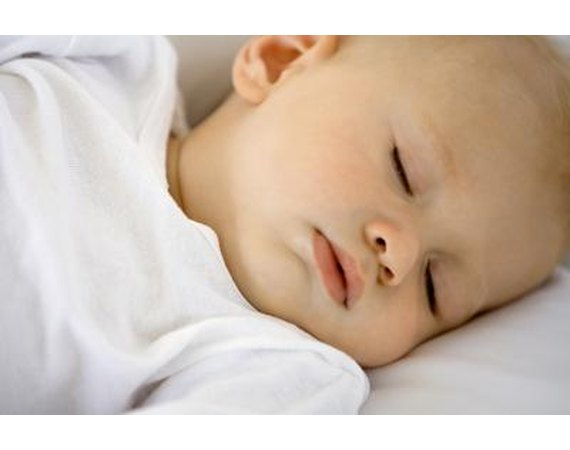
More than 2,000 children die each year as a result of injuries they suffer at home, according to the Home Safety Council as reported by CNN Health. Keeping your baby safe at home should be a number one priority for any parent. Most infants sleep for up to 16 hours per day, meaning a safe room is a necessity for your baby and your own peace of mind.
Instructions
- 1

Place your baby's crib on a wall without a window. This will keep the crib away from mini-blind cords and curtain ties, which can wrap around his neck and cause strangulation. Check your crib for any sharp edges or chipping paint. Keep your baby's crib mattress on the lowest position, especially when he starts to pull and stand up. Avoid crib toys and mobiles with string ties to prevent choking and strangulation.
2Avoid the use of bumper pads, pillows and stuffed animals in your baby's crib. These might look cute but could suffocate your baby in the middle of the night. Use a firm mattress with tight-fitting sheets and a blanket sleeper to keep your baby warm during colder months. A light sleeper or one-piece outfit should be fine for warmer months.
3
Place outlet covers in all the outlets in your infant's room, even the hidden ones. This will prevent your baby from receiving a bad shock or electrocuting herself once she is mobile and curious about her world.
4
Place the changing pad on a firm and sturdy surface or use a well-built changing table. Check the safety straps periodically for frays or rips and always use them when changing your baby. Never leave a baby unattended on a changing table or other high surface for even a second, as she could fall off, resulting in severe injuries.
5Keep your baby's room at a comfortable temperature, usually around 68 to 70 F. Use a fan to keep air circulating in the summer months and a humidifier to keep the air from drying out in the winter. These protective measures can help prevent Sudden Infant Death Syndrome, or SIDS, according to the authors of "What To Expect The First Year".
6
Use a baby safety gate at the entrance to your baby's room and the top of your staircase once your baby becomes mobile. This will prevent a serious injury or even death from occurring because your child pushes the gate over or falls down the unprotected stairs. Use hardware-mounted gates rather than pressure-mounted whenever possible, as an older child could easily push over a pressure-mounted gate.
0 comments:
Post a Comment